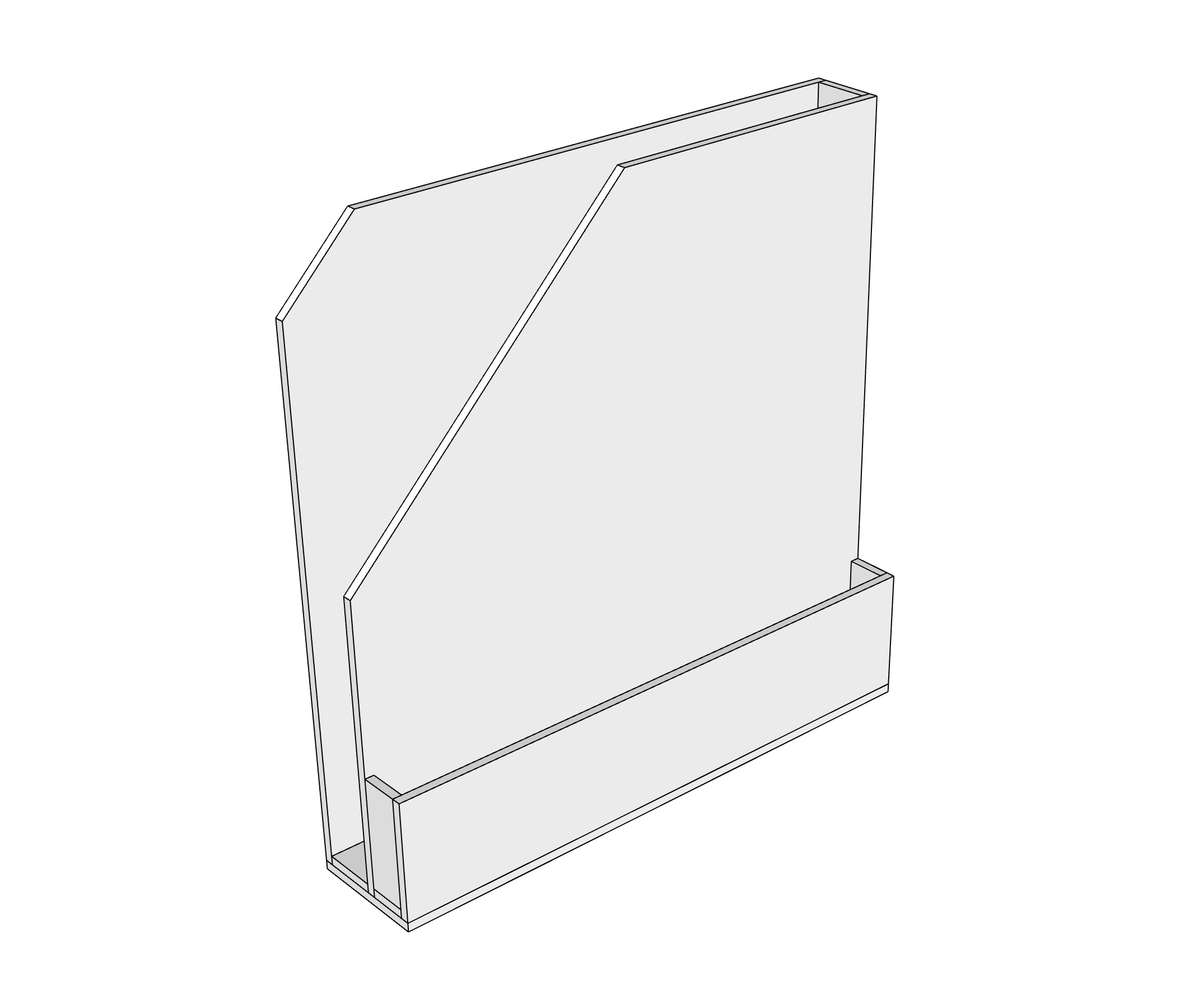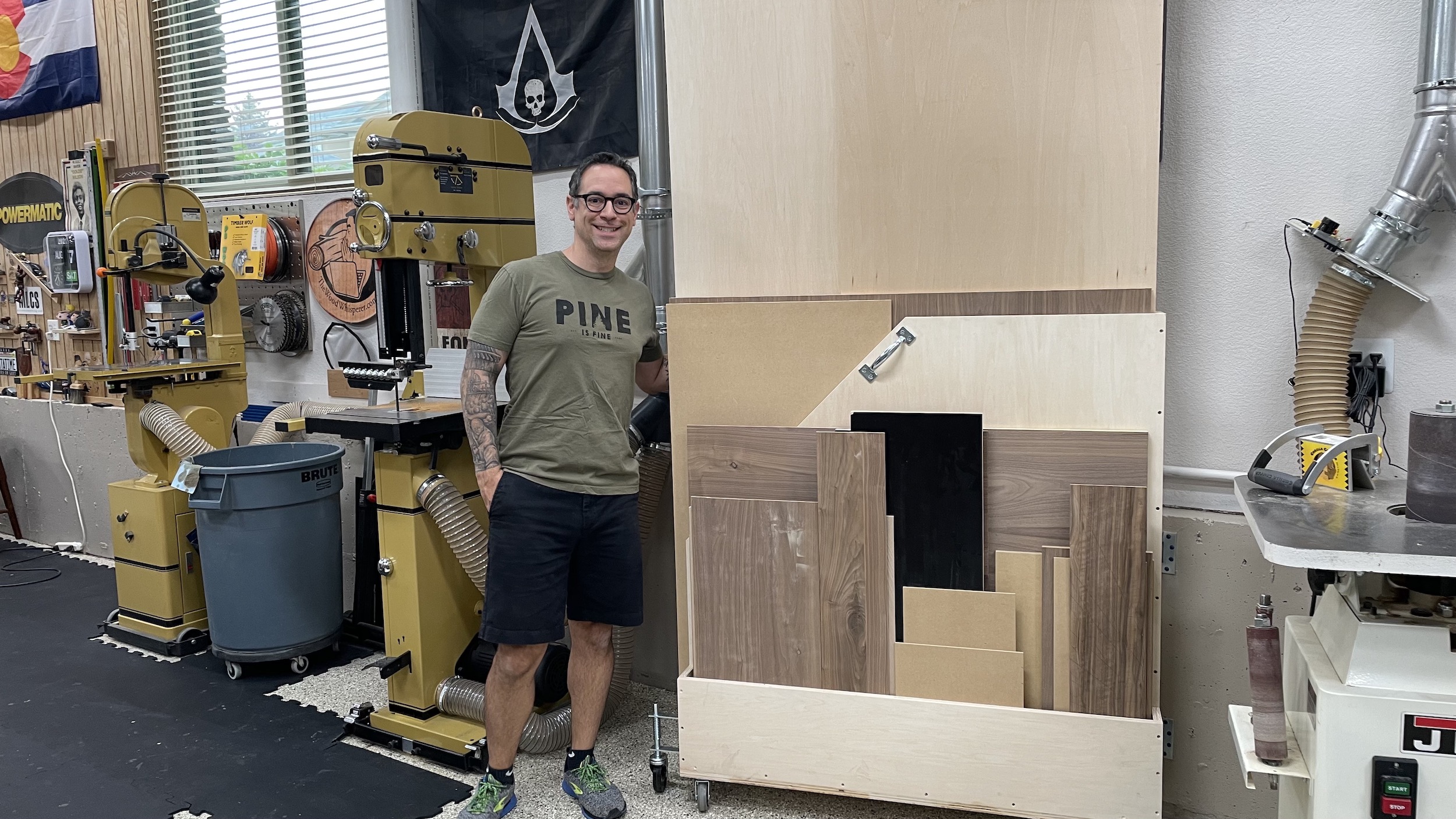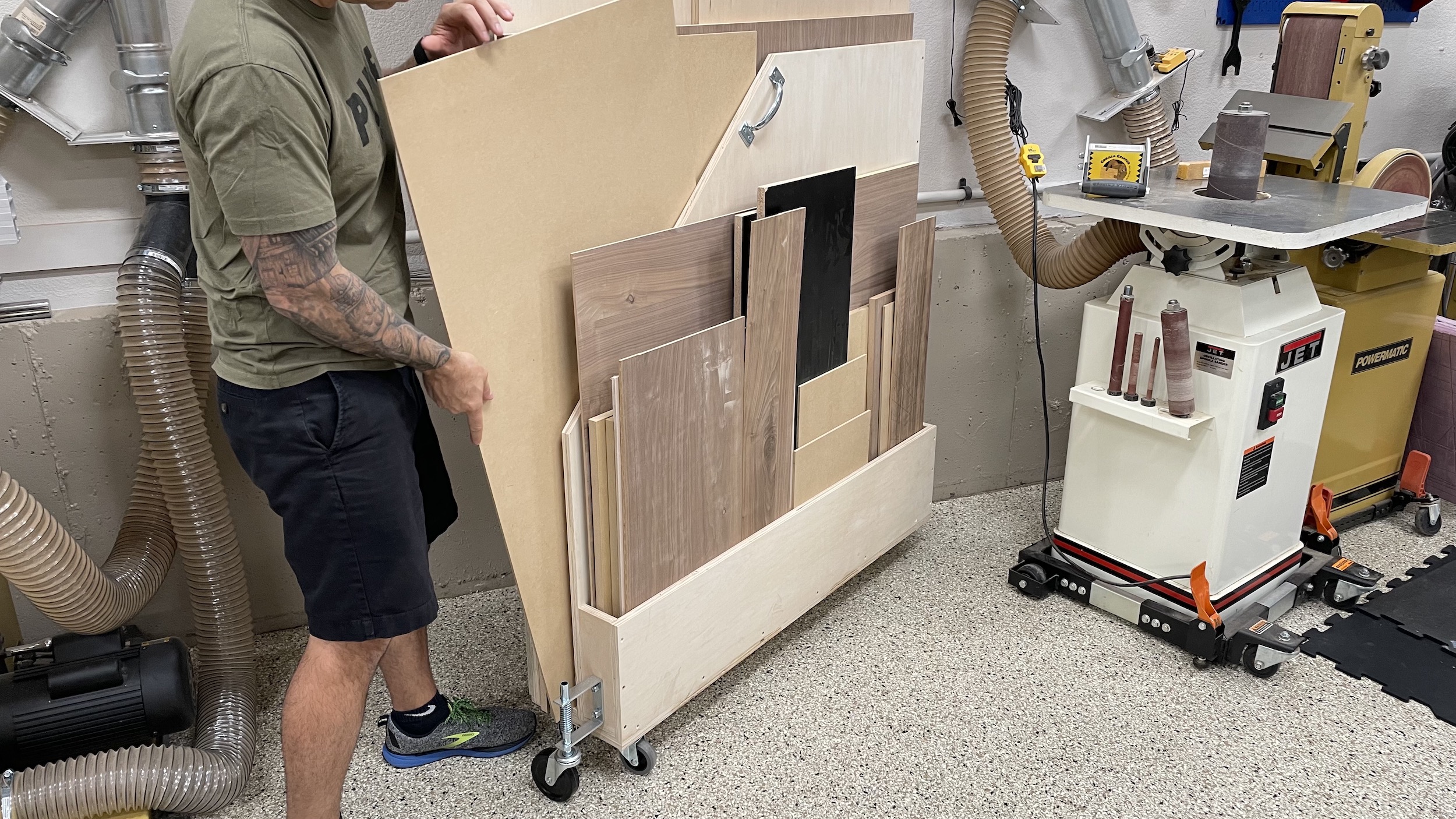Description
Please note: this Space-Saving Plywood Cart Plan is intended to be mounted to a wall. It is not built to stand on its own so please do not attempt that.
This Space-Saving Plywood Cart Plan does not come with written instructions. It consists of a cut list and measured drawings. Please refer to the Space-Saving Plywood Cart video for instructions.
The Whole Story:
When I first moved to Arizona, I was fortunate to have a huge garage with an RV pull-through. As a result, wall space was not an issue and my plywood storage consisted of a swing-out rack near the front door. Check out the original cart. Here in Denver, my shop space is much more limited and to date I simply leaned all of my sheet goods against the wall between two power tools. This turned out to be incredibly inefficient because every time we need something at the back of the stack, we have to move EVERYTHING out of the way first. Thankfully, my assistant Jon made a great suggestion: a swing-out rack. While we certainly don’t have the space for a horizontal swing-out rack, we could definitely make a vertical work in this space. So that’s what we have here is a simple plan for a plywood rack that can hold full sheets and scraps while being able to hinge away from the wall for loading and unloading.


